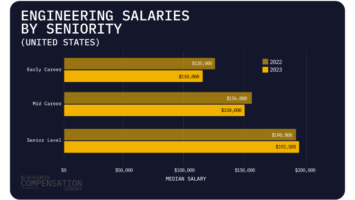As blockchain technology transitions toward proof-of-stake consensus models, a pressing question arises — will these systems maintain decentralization, or will rewards disproportionately pool among large players at the expense of broader participation?
Dr. Wenpin Tang, a leading researcher of blockchain incentives, analyzed these dynamics in proof-of-stake (PoS) systems using advanced mathematical models. His findings highlight and begin to unpack the complex forces at play.
In pure PoS chains like Ethereum, miners bid using their coin balances for validation rights with no trading allowed between miners. Winners earn more coins as rewards. This seems to favor large players, but Dr. Tang explains it’s more nuanced:
The key takeaway is it will be different for large and small miners. For large miners (e.g. Binance or Musk), their shares will be stable e.g. if they have 10% initial shares, they will also be close to 10% in the end. That is not the case for small miners (e.g. many retailer miners), their shares suffer from fluctuations. If they have 0.01% initial shares, they may end up with 0.0001% or 0.1%, say — with the downward probability being higher than the upward probability.
So while giants remain steady in this pure PoS system, small miners face significant volatility with a long-term trend toward loss of stake. Dr. Tang notes this could lead to greater reliance on large validators for blockchain upkeep.
Introducing trading to the ecosystem, however, has a profound effect. When miners can trade coins, new dynamics emerge. Dr. Tang modeled a “market impact” approach where selling drops prices and buying lifts them. The math then showed trading enforcing decentralization over time.
This, however, presumes a “homogenous” group of miners validating the network, meaning that all are acting to optimize their positions. “The analysis presumes miners have identical incentives and information,” Dr. Tang says, “but reality is far messier.”
Equally vital is moving beyond perfect rationality assumed in most models. “Real decisions come from ‘feeling,’ not calculated optimization,” Tang explains. “This chaotic collective behavior requires study.”
In other words, human feelings shape incentives, and differing incentives create heterogeneity among the mining population that is difficult for pure mathematics to account for. So while Dr. Tang’s equations lend directional insights, real-world human actions drive ultimate results. Dr. Tang uses the term “bounded rationality”—rational thought that is nevertheless “bounded” by human foibles and incentives.
Here Dr. Tang sees machine learning playing an important role in analyzing the huge number of idiosyncrasies across different actors on the blockchain. It could cluster and analyze different miner behaviors and knowledge. Insights gained would assist protocol designs in better promoting decentralization.
This interplay of theory and practice leads Tang to conclude:
“Well-structured PoS systems can potentially decentralize wealth. But achieving this demands carefully calibrating rewards and trading parameters − and always accounting for human imperfection.”
While fully decentralized networks remain an aspirational goal, Dr. Tang’s research provides hope they can be achieved through careful design considerations. Importantly, it demonstrates the models that do trend in a favorable direction, and provides at least a partial framework for sustainable network design.
However, mathematical models alone are not quite sufficient to tell the whole story. Maintaining broad participation requires deep understanding of miner behaviors and incentives. By combining insights from theory and practice, blockchains may yet fulfill their promise of equitable access and distributed trust. But the path forward will require acknowledging social and cognitive nuances beyond the purely technical.























Comments (No)